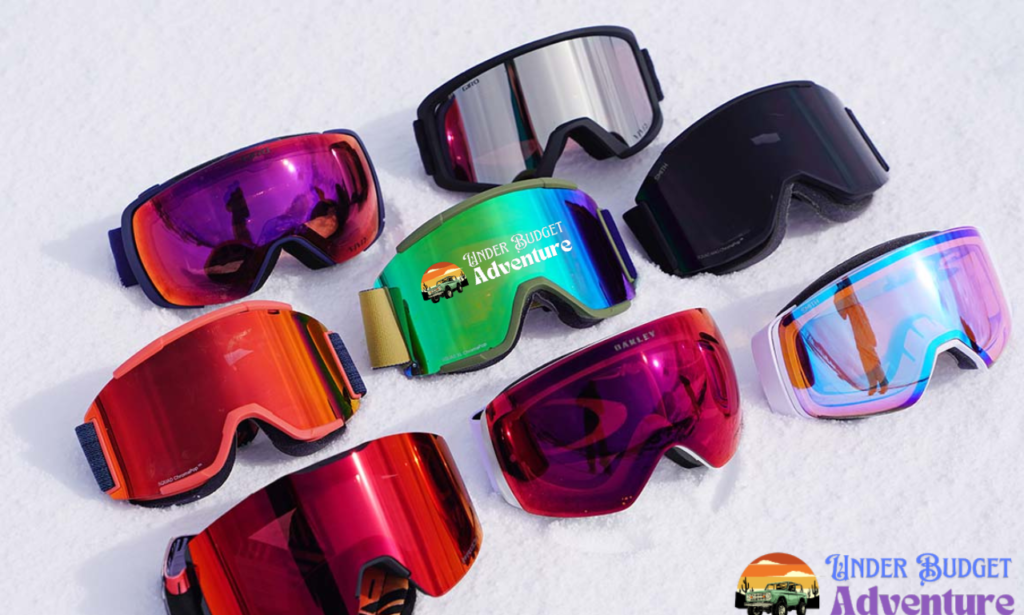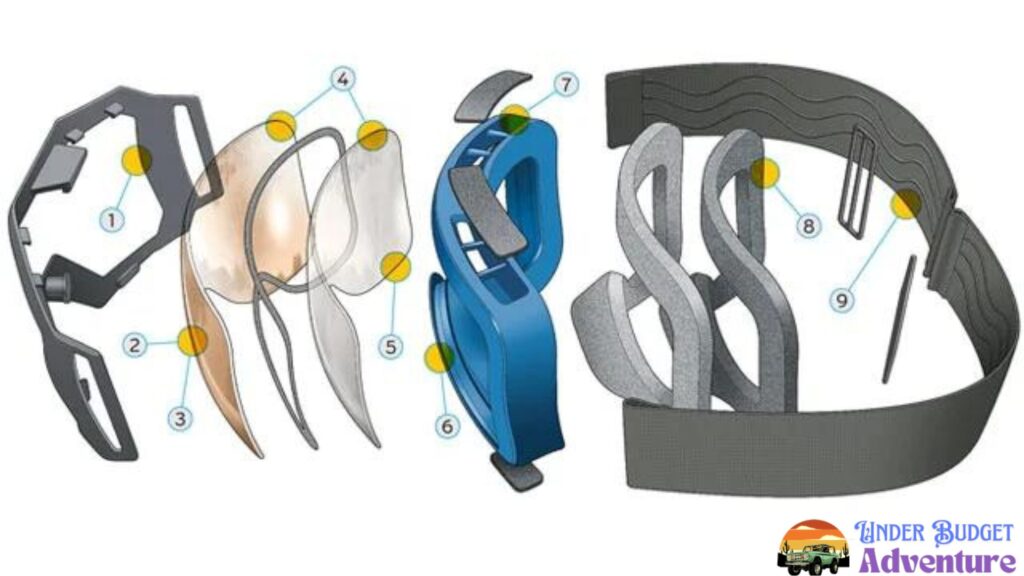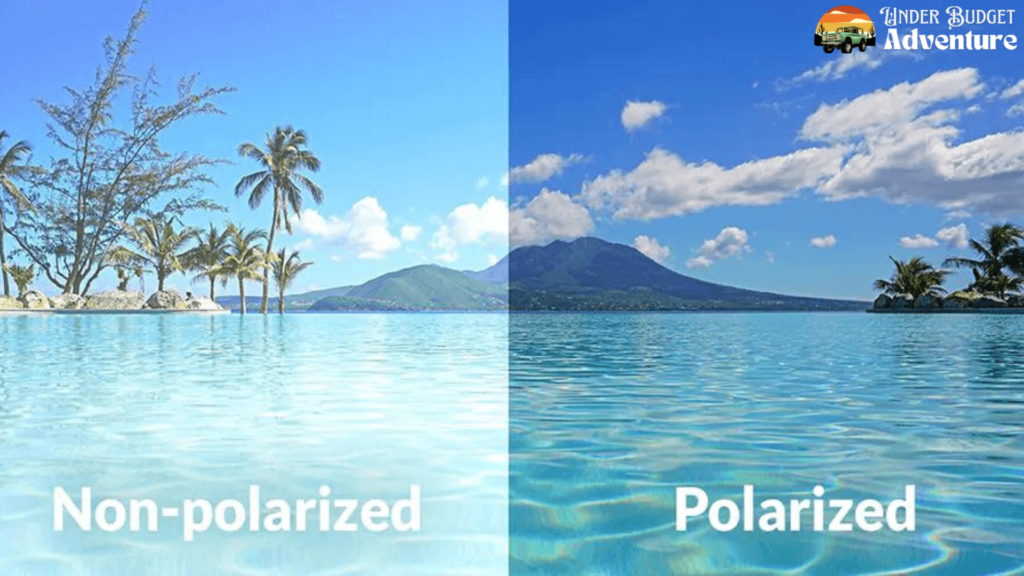What Color Lens is Best For Ski Goggles? – As the winter season approaches, choosing the right color lens for your ski goggles is compulsory. With a rainbow of options available, figuring out what works best for you might feel overwhelming.
What are the factors to consider when choosing the lens color?
Choosing the right lens color for your ski goggles can really change your experience on the slopes. When I first started skiing, I didn’t think much about it. I just picked a pair that looked cool. But I quickly learned that the best color for ski goggles depends on the weather and lighting conditions. For bright sunny days, darker lenses like gray or brown can reduce glare and help you see more clearly. On cloudy days, lighter lenses such as yellow or rose can brighten up your view, making it easier to spot bumps and obstacles.
Another important factor is how the lens color affects depth perception. I found that some colors enhance contrast, which is super helpful when navigating through varied terrain. A ski goggle lens color guide can help you understand which shades work best for different conditions. For instance, amber lenses are great for overcast days because they boost contrast and clarity. So, before you hit the slopes, take a moment to consider the lens color; it can make a huge difference in your overall skiing experience!
Popular Lens Colors for Ski Goggles
choosing the best color for ski goggles felt overwhelming. I quickly learned that different lens colors can change how you see the snow and the terrain. For bright sunny days, I found that darker lenses, like gray or dark brown, really helped reduce glare and made everything clearer. It’s amazing how much difference the right lens can make in your comfort and performance!
On cloudy days, I discovered that lighter colors like yellow or rose worked wonders. These shades brighten up the gray skies and help you spot bumps in the snow more easily. I often refer to my ski goggle lens color guide before each trip; it’s become part of my routine. Each color has its own unique benefits, and experimenting with them has made my skiing experience even more enjoyable. So whether you’re a beginner or a pro, finding the perfect ski goggle lens color can truly enhance your time on the mountain!

Amber, Orange and Yellow
Amber lenses are popular because they provide excellent contrast during flat light conditions. This color can brighten cloudy days, helping you navigate tricky runs with confidence.
Orange lenses take things a step further by enhancing depth perception. They filter out blue light, which is often challenging for our eyes in bright conditions. This means skiers can spot obstacles more easily. Orange gives off a cheerful vibe that can energize your skiing experience
Lastly, yellow lenses are perfect for low-light situations or night skiing. They offer great clarity and allow more light to enter your eyes without being too harsh on them. This makes every run enjoyable
Grey
Grey lenses are among the most popular choices because they provide excellent clarity and true color perception. This is especially useful on sunny days when snow can sparkle blindingly..Another great thing about grey lenses is their versatility.
They work well in varying light conditions. By choosing grey lenses, skiers ensure that they have a reliable option for different weather situations without needing multiple pairs of goggles
Brown
Brown lenses are a popular choice among skiers. This is especially helpful on days when light conditions are tricky. Additionally, they provide good UV protection, keeping your eyes safe from harsh sunlight. Having a pair of goggles with brown lenses could not only improve your experience but also keep you safer while gliding down those thrilling runs
Blue
Blue lenses are especially effective in sunny conditions. But blue isn’t just for bright days! Many skiers find that light blue or azure lenses work well even in overcast weather. Blue-tinted goggles can keep your vision sharp and your style on point.
Clear Ski goggle lenses
Clear Ski goggle lenses are the best for skiing at night. Use them when it’s dark outside. They work well in the evening around sunset and for skiing at night.
Mirrored Lens Ski Goggles
Mirrored lenses can come in any color on the outside and mainly just look stylish. This coating, known as a “Revo coating,” is applied to the outside of the lens. It doesn’t affect the color you see from the inside of the goggles. For example, a blue mirrored lens looks blue on the outside, but you might see yellow or orange when you look through it.
What is Lens VLT
When it comes to choosing the best VLT for ski goggles, it’s not just about picking a number; it’s about understanding your unique skiing style and the conditions you’ll face on the mountain. The VLT, or Visible Light Transmission, tells you how much light passes through the lens.
A lower VLT percentage is ideal for bright, sunny days, while a higher percentage works wonders in overcast or flat-light conditions. But what if you could find a versatile option that adapts to both? That’s where photochromic lenses shine, adjusting their tint based on the light around you.
Navigating the ski goggle VLT guide can feel overwhelming, but think of it as your secret weapon for maximizing enjoyment on the slopes. For those who ski in varied conditions, looking for a lens with a VLT range between 20-40% might be your sweet spot. This range strikes a balance, providing enough protection on sunny days while still allowing for visibility during those cloudy spells.
Ultimately, the best VLT for ski goggles is one that aligns with your adventures—whether you’re carving down sunlit runs or navigating through snowy blizzards. Trust your instincts and let the mountain guide you!
What are Photochromic Lenses?

Photochromic lenses change how dark they are based on the brightness of the light. They usually let in 20-30% of light. Some photochromic lenses let in 20-40% or 30-50% of light. Photochromic ski goggles are designed to work well in different light conditions with just one lens.
How to Choose Ski Goggle Lens Color
Choosing the right ski goggle lens color can make a huge difference in your skiing experience. From my own adventures on the slopes, I’ve learned that the best ski goggle lens color really depends on the weather and lighting conditions. On bright, sunny days, I love using darker lenses like gray or brown. They reduce glare and help me see the details of the snow more clearly, making each run more enjoyable.
On overcast days or when the snow is flat and gray, I opt for yellow or rose-colored lenses. These colors brighten up the view and enhance contrast, allowing me to spot bumps and changes in terrain more easily. A handy ski goggle color guide can help you decide what to choose based on the conditions. Remember, the best lens color for skiing is the one that suits your style and helps you feel confident on the mountain!
Bright And Sunny Conditions
For bright and sunny conditions, use a lens with 8-15% VLT. Pick a dark brown, gray, blue, or any color with a mirror finish. If you choose a mirror finish lens like ChromaPop, it might have a yellow or orange tint on the inside, which helps you see the snow better.
Best Ski Goggles for Cloudy Conditions
When the skies are gray and the snow is soft, having the right gear can make all the difference. I remember my first ski trip on a cloudy day; I struggled to see the slopes clearly. That’s when I discovered the best ski goggles for cloudy days, and it changed everything! Look for goggles with yellow or rose-tinted lenses. These colors brighten your view and enhance contrast, making it easier to spot bumps and changes in the terrain.
Another key feature to consider is anti-fog technology. There’s nothing worse than stopping mid-run to wipe your goggles. The best ski goggles for cloudy conditions often come with double lenses and ventilation systems that reduce fogging. Trust me, being able to focus on your turns instead of your fogged-up lenses makes for a much more enjoyable experience. So next time the weather isn’t perfect, don’t let it hold you back—grab a pair of the right goggles and hit the slopes with confidence!
Partly Cloudy Conditions
For partly cloudy conditions, use a lens with 20-30% VLT. Choose a lighter shade like gray, brown, blue, or a mirror lens. If you pick a mirror lens, it might be gray, yellow, orange, or amber on the inside. These are often called “everyday lenses.”
Evening and Night Skiing
For evening and night skiing, use a lens with 80-95% VLT that is clear. The lens might have a slight yellow tint, but this won’t make a big difference when skiing at night.
If you’re buying goggles with fixed lenses that can’t be changed, choose the one that matches the light conditions you ski in most often. If you’re unsure, go for a 20-30% VLT everyday lens. These work fairly well on both bright days and cloudy or snowy days.
Popular Ski Goggle Lens Technology
Many ski goggle brands use special lens technologies to help you see better on the slopes. Smith ChromaPop and Oakley PRIZM are the most common ones you’ll hear about. These technologies work similarly. you are skiing lover then you should also read about what is better, Mittens vs Gloves for skiing?


They filter out certain colors where blue, red, and green mix. This helps you see the colors more clearly and spot features on the snow more easily.
Basically, they use a yellow or orange inner lens that gives everything a slight yellowish or orange tint. This reduces the blue shades you see by turning them yellowish or orange. That’s why yellow, amber, or orange lenses can help you see better on flat light days.

Smith Chroma Pop
I recently decided to invest in a pair of Smith Chroma Pop ski goggles, and I can’t believe the difference they make on the slopes. The lenses really enhance colors, making the snow look brighter and the terrain easier to read. It’s like wearing a filter that brings everything into sharp focus. With the Smith ski goggle lens color guide, I was able to choose the perfect lens for the weather conditions, which made my skiing experience so much better.
One thing I noticed is how crucial the right lens color is for visibility. The snow goggle lens color guide helped me understand which shades work best in different light conditions. For bright sunny days, the darker lenses were fantastic, while on overcast days, the lighter ones made everything pop. This simple change transformed how I navigated through the mountain, allowing me to spot subtle bumps and changes in the snow. I can’t recommend trying out the Smith Chroma Pop enough—it’s truly a game changer for anyone who loves skiing!
Oakley Prizm
Oakley PRIZM works like ChromaPop. It filters out some color wavelengths and boosts others. This helps you see what you want more clearly and reduces the confusion from overlapping colors.
Giro Vivid
Giro uses a different method with their Vivid lenses. Instead of filtering out blue shades, they filter out red and green shades where colors overlap. Vivid lenses usually have a red tint when you look through them from the inside. Check out the video below for an explanation of Giro Vivid lens technology.
Dragon Lumalens
Dragon Alliance calls their color-filtering lens technology “LumaLens.” It works like the others by filtering colors where they overlap.
Outdoor Master Ultra
Outdoor Master added color filtering to their Ultra XL goggles, but it’s only available with some lenses. It works like Smith ChromaPop, and the color-enhancing lenses have a similar yellowish or orange tint when looked at from the inside.
Polarized vs non-polarized ski goggle lens
There are pros and cons to using polarized ski goggles. A polarized lens only lets light through from certain angles, which helps reduce glare and reflections.

On a bright sunny day, polarized lenses are helpful because they block out glare and reflections on the snow, making it easier to see.
However, on a flat light day, polarized lenses can be a problem. They block glare and reflections, which can make it harder to see ice on the snow. The glare from the ice, which helps you spot it, is blocked by the polarization.
Conclusion
Selecting the right color lens for your Ski Goggles can significantly enhance your experience on the slopes. Factors such as light conditions, Weather, and personal preferences play a crucial role in determining which lens hue is most suitable for your needs.
While darker lenses are ideal for bright, sunny days, lighter tints like yellow or rose can improve visibility in overcast or snowy conditions. It’s essential to consider versatility if you plan to ski in varying environments throughout the season.
Ultimately, investing time in choosing the appropriate lens color will ensure you enjoy every moment of your skiing adventure. So gear up and make that informed choice to elevate your performance and safety on the mountain!
Frequently Asked Questions
Does the color of ski goggles matter?
The color of your ski goggle lens can really affect how well you see the snow. Yellow, amber, and orange lenses help you see details in the snow better on flat light days. Dark gray lenses block more sunlight, making it easier to see on bright days. The color of the goggle frame and strap doesn’t affect performance.
What Color Lens is Best for Overcast Days Skiing?
For overcast days, yellow, amber, or orange ski goggle lenses are the best. These colors block some blue shades, which makes it easier to see details in the snow. This will help you see better on flat light days.
What Lens Color is Best for Bright Day?
Best color goggle lens for sunny days are dark-colored lenses that block more sunlight are the best. A lens with 8-20% VLT (Visible Light Transmission) in dark gray, brown, blue, or black will block enough sunlight to help you see clearly.

